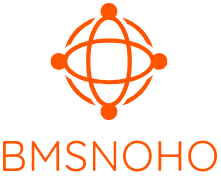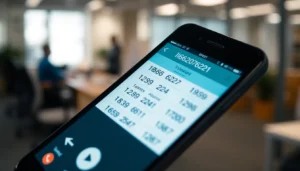Table of Contents
ToggleIn the fast-paced world of texting, acronyms and slang can leave anyone feeling a bit lost. Enter “ima”—a term that’s taken the digital conversation by storm. It’s not just a random jumble of letters; it’s shorthand for “I’m gonna,” and it’s become a go-to phrase for those who want to keep their messages snappy and casual.
Understanding IMA in Text
The acronym “ima” represents the phrase “I’m gonna.” This shorthand form has gained traction in informal texting, reflecting the trends in modern communication.
Origin of the Term
The term “ima” originated from the spoken English phrase “I’m going to.” It simplifies communication while maintaining the message’s intent. In the early 2000s, digital platforms like instant messaging and social media popularized various acronyms, and “ima” naturally fit into that trend. Users embraced it for its convenience, opting for brevity in conversation. The linguistic shift toward acronyms reflects broader societal changes in how individuals express themselves digitally.
Popular Usage in Online Communication
“IMA” frequently appears in casual digital conversations. Users often deploy it in text messages, social media posts, or chat apps like WhatsApp and Discord. This acronym allows for quick expressions of future intentions, such as “ima grab some food.” It connects people by creating a relatable and informal tone. The usage transcends only younger audiences; various age groups incorporate “ima” into their written interactions. As communication continues evolving, acronyms like “ima” simplify expressions, making conversations more efficient.
Different Contexts of IMA

“IMA” has various meanings depending on the context. Understanding its use helps navigate modern communication effectively.
Casual Conversations
In casual conversations, “ima” serves as an informal way to express plans. Users often utilize it in text messages to convey intentions with ease. For instance, someone might say, “IMA head to the store later,” indicating their future action. Age groups from teenagers to young adults frequently adopt this acronym, enhancing the relaxed tone of their chats. Friend groups often employ “ima” to maintain an approachable atmosphere while interacting. Creating a sense of immediacy, this term fits seamlessly into everyday dialogues, allowing for quicker responses without sacrificing meaning.
Formal Settings
“IMA” rarely appears in formal settings due to its informal nature. Professional environments often prioritize clear communication, avoiding slang acronyms that may confuse recipients. However, some might opt for “IMA” in informal emails or messages among colleagues who share a casual rapport. A scenario might include, “IMA submit the report by noon,” suggesting an easygoing approach. Nevertheless, sticking to traditional language remains essential for formal presentations and communications. Organizations often encourage clarity, steering clear of ambiguous terminology like “ima” to maintain professionalism and respect.
Variations and Alternatives
Acronyms like “ima” often appear alongside similar terms that help convey similar meanings in casual conversation.
Similar Acronyms
Terms such as “g2g” (got to go) and “brb” (be right back) provide quick ways to communicate intentions. Users frequently opt for “bbl” (be back later) when unsure about their return time. These acronyms enable efficient expression, mirroring “ima’s” purpose. Texting culture thrives on such abbreviations, enhancing the speed and relatability of digital exchanges. Younger generations especially appreciate this shift toward brevity in language.
Regional Differences
Usage of “ima” varies across different regions. In the United States, it frequently appears in informal contexts, especially among teens and young adults. Some areas may see variations like “Ima gonna” in casual talks. Conversely, non-English speaking regions might implement similar phrases in their local slang, reflecting cultural differences. Communication styles determine how widely “ima” spreads, influencing its popularity among users globally. Understanding these nuances assists in navigating regional texting habits effectively.
Impact on Communication
Acronyms like “ima” significantly influence modern communication styles. Quick exchanges define digital interactions, promoting efficiency in conversations. Users often prefer brevity, which “ima” embodies, facilitating rapid exchanges of thoughts and intentions.
Text messages represent a primary platform where “ima” thrives. Casual communication among friends often prioritizes speed over formality, resulting in relaxed dialogue. Teenagers and young adults particularly embrace this shift, using “ima” to express plans with phrases like “ima grab lunch.”
While informal settings welcome such terms, formal communications rarely utilize abbreviations like “ima.” Professional environments value clarity and respect traditional language standards. Maintaining professionalism remains essential in emails and official messages.
Some variations of “ima” exist, including similarly efficient acronyms like “g2g” and “brb.” These terms serve comparable purposes, enhancing quick communication across digital platforms. Texting culture reflects a broader preference for abbreviated language, especially among younger generations.
Regional differences in the use of “ima” also emerge. In the U.S., its prevalence stands out among teens, while other cultures adopt local slang for similar expressions. Understanding these variations highlights the need for adaptability in communication methods across diverse audiences.
Effectively navigating the nuances of “ima” and its context enhances overall interaction quality. As language continues to evolve, familiarizing oneself with such terms may prove beneficial for clearer exchanges.
Understanding the meaning of “ima” enriches one’s grasp of modern texting culture. This acronym reflects a shift towards more casual and efficient communication styles. Its usage among younger generations demonstrates how language evolves to meet the demands of digital interaction.
As conversations continue to migrate online, familiarizing oneself with acronyms like “ima” can enhance communication and foster connections. Recognizing the informal nature of such terms is essential for navigating both casual chats and maintaining professionalism in different contexts. Embracing these linguistic trends keeps conversations relatable and engaging.







